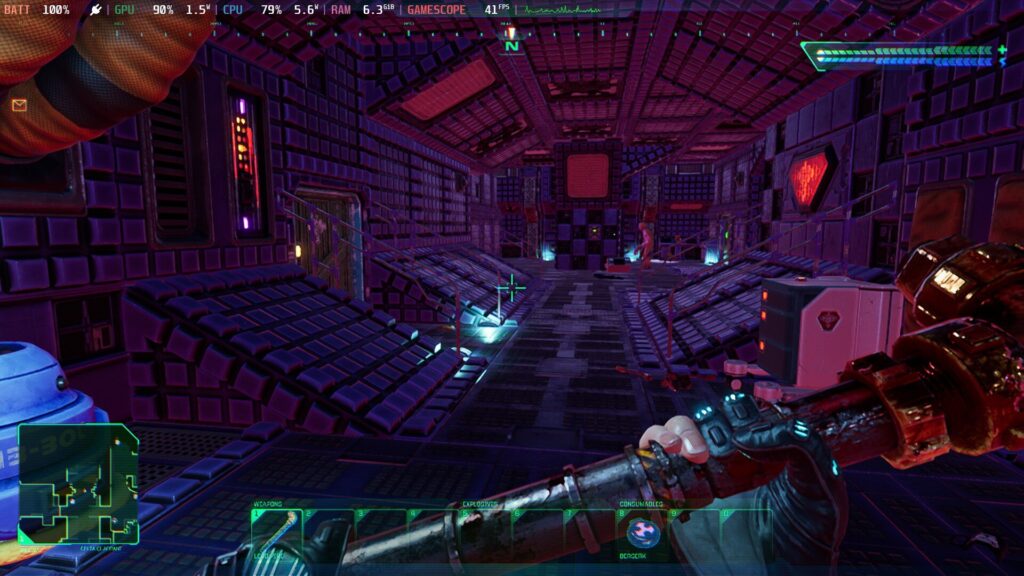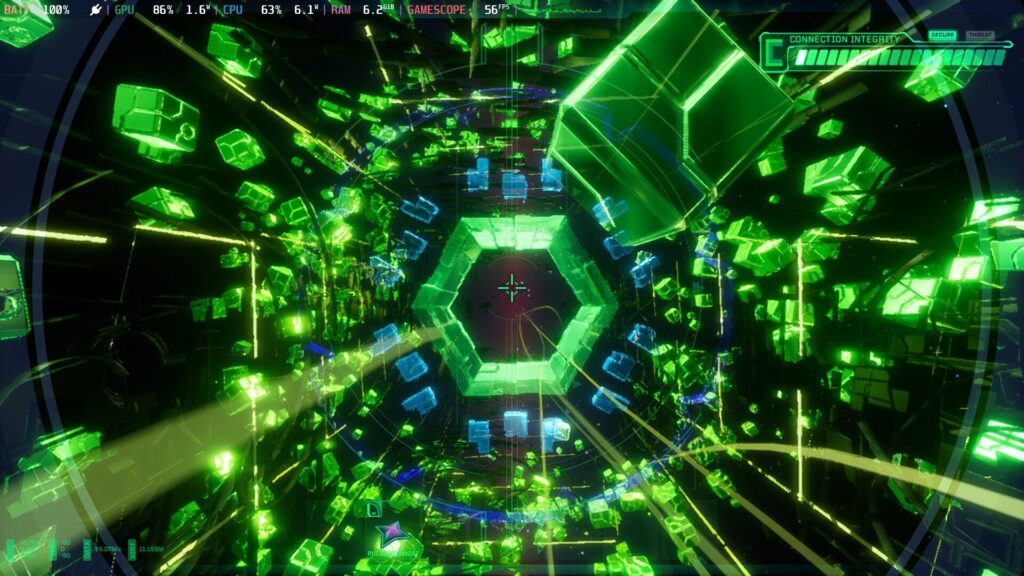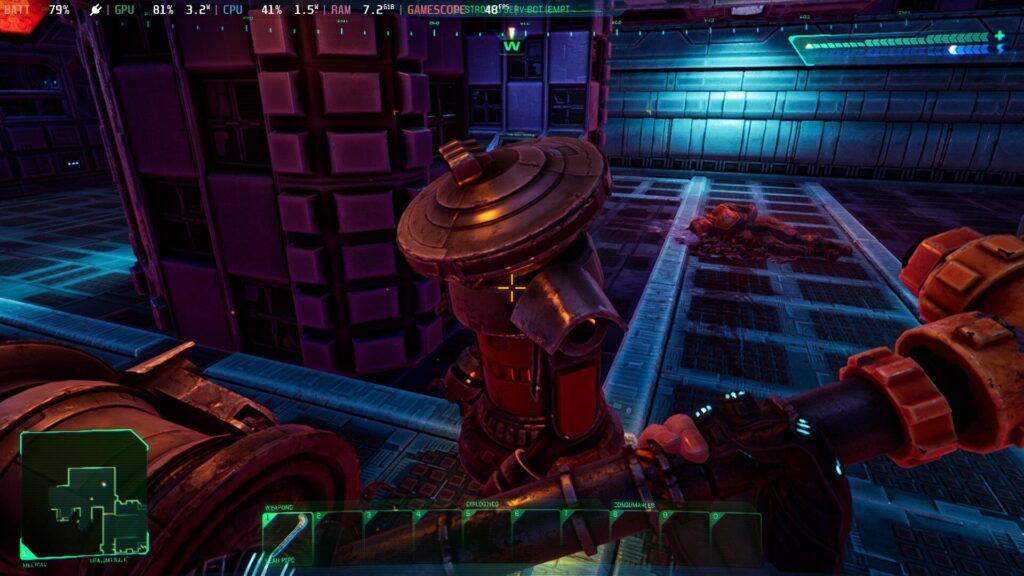Is System Shock Playable on Steam Deck?
The System Shock remake is playable on Steam Deck at a smooth 60 frames per second.
System Shock Steam Deck Performance
System Shock on Steam Deck runs clean. Expect a smooth 60 frames per second, with minimal drops on medium settings.
Visually, System Shock has been designed to stay true to the original while also feeling fresh and modern. Expect plenty of pixelated elements, which isn’t going to be for everyone but I’m of the mindset it helps to make the game feel more authentic. Fight me.
There will be frame drops when things get busy on-screen, but it’s only a handful of frames at max. I only noticed it due to playing with the Steam stats overlay turned on and I’d wager most wouldn’t be able to tell the difference.
One thing that’s worth touching upon, it’s possible to activate the Steam Deck’s in-built FSR by changing the window mode to windowed. This cuts off the top and bottom of the screen and replaces them with black bars, but the trade-off is extra crisp visuals.
If you can’t stand black bars, by all means leave it as is. But if you’re after a nice visual boost, I’d definitely recommend turning it on to see the difference.
System Shock Best Settings

The settings below are what I recommend to get a stable 60 frames per second without sacrificing visual fidelity. Everything set to medium runs well and leaves you some wiggle room should you need to adjust anything later on.
It is possible to drop the TDP down to eight watts, but I found that to be somewhat inconsistent during my testing. 10 watts is the sweet spot and that nets you around three hours of playtime before needing to plug the Steam Deck on to charge.
What is slightly annoying is System Shock doesn’t let you manually set the in-game resolution. I’m not sure if this is a problem with running the game on the Steam Deck, but even with windowed mode turned on, I couldn’t change the resolution. You can change it from the launch options, but that’s a step that really shouldn’t be needed.
| System Shock (In-game Settings) | |
| Ambient Occlusion | Medium |
| Fog Quality | Medium |
| Post Processing Quality | Medium |
| Texture Quality | Medium |
| Shader Quality | Medium |
| Shadow Quality | Medium |
| Effects Quality | Medium |
| Foliage Quality | Medium |
| Steam Deck Settings (Quick Access Menu) | |
| TDP: 10 | Estimated Battery Life: 3 Hours |
| Docked Mode Resolution: 1280×720 | FSR: On (Docked Mode) |
| GPU Usage: 62% | Temperature: 68 degrees |
| Battery Drain: 17.4w | Tearing: On |
| Extra Info | |
| Fills the Entire Steam Deck Screen | Yes |
| Valve Grading | Unsupported |
| Performance Rating: 4/5 | |
Bugs and Issues

While bugs are few and far between, there are several quality-of-life improvements that are needed. Sometimes settings don’t save, text isn’t as legible as it should be, pressing ‘B’ to exit a menu forces the player character to crouch, and there isn’t an option to toggle sprint, meaning you’ll need to keep the L3 button held in to run.
There’s also an issue with button prompts not correctly aligning during the tutorial phase. Oh, and hitting spider-bots doesn’t always register swings on melee weapons.
All of the above issues are annoying, but they weren’t deal-breakers for me. The game runs well and can be enjoyed regardless. Plus a lot of this stuff can be fixed with patches down the line. It’s not ideal, but it’s not the end of the world, either.
Verdict

System Shock is a faithful remake. Take that how you want to. For some, it’s going to be a trial in patience – there’s lots of backtracking, dying, and trial and error. For people expecting Doom-but-new, you won’t find that here.
But if you’re after a genre-defining game, with elements that helped shape modern gaming, System Shock is an experience worth going back to. The remake hasn’t modernized much outside of the graphics and that, to me, makes it one of the most faithful remakes to date.
All screenshots captured on Steam Deck. | Review code provided by the publisher.

